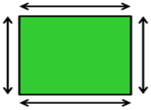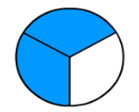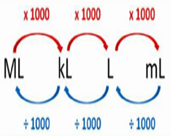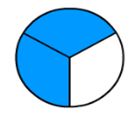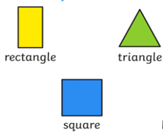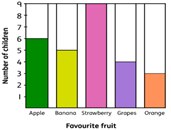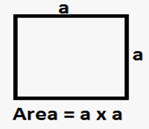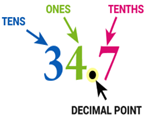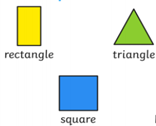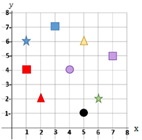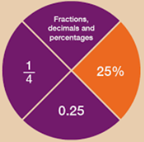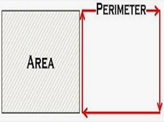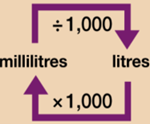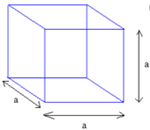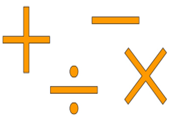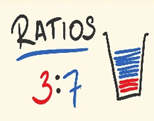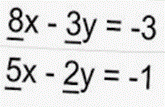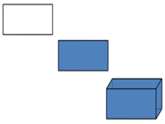Maths
Curriculum Statement
Maths at Stamshaw Junior School
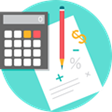
Intent
At Stamshaw Junior School, our curriculum for mathematics aims to ensure that all pupils:
- Become fluent in the fundamentals of mathematics, including through varied and frequent practice with increasingly complex problems over time, so that pupils develop conceptual understanding and the ability to recall and apply knowledge rapidly and accurately.
- Reason mathematically by following a line of enquiry, conjecturing relationships and generalisations, and developing an argument, justification or proof using mathematical language
- Can solve problems by applying their mathematics to a variety of routine and non-routine problems with increasing sophistication, including breaking down problems into a series of simpler steps and persevering in seeking solutions.
In order to achieve this, our curriculum offer ensures pupils develop their declarative, procedural and conditional knowledge. We develop declarative knowledge by teaching the mathematical facts, concepts and rules; the procedural knowledge by ensuring pupils know how to perform the steps in a process, and the conditional knowledge by providing children with the ability to know when to use a procedure, skill or strategy.
At our school, mathematics is an interconnected subject in which pupils are nurtured to move fluently between representations of mathematical ideas. Our programmes of study are, by necessity, organised into distinct domains, so that our pupils make rich connections across mathematical ideas to develop fluency, mathematical reasoning and competence in solving increasingly sophisticated problems. Teachers and leaders work closely with each other to identify cross-curricular links within this subject so that our children can also apply their mathematical knowledge other subjects such as Science. Our expectation is that the majority of pupils will move through the programmes of study at broadly the same pace. However, our teachers are encouraged to decide about when to progress based on the security of pupils’ understanding and their readiness to progress to the next stage. Pupils who grasp concepts rapidly are challenged through being offered rich and sophisticated problems before any acceleration through new content. Those who are not sufficiently fluent with earlier material consolidate their understanding, including through additional practice and pre-teaching before moving on.
Implementation
At Stamshaw, Children study mathematics daily covering a broad and balanced mathematical curriculum including elements of number, calculation, geometry, measures and statistics. Alongside daily maths sessions an additional 10-15 minutes a day is spent focusing on The Big Five (addition, subtraction, multiplication, division and fractions) to build fluency and precision in these areas and to think about numbers in a different way. Due to the interconnected nature of mathematics, at Stamshaw, we aim to teach maths in a cross curricular manner as well as discretely to teach the practical application of mathematical skills. We focus not only on the mathematical methods but also focus on mathematical vocabulary and to use Maths Mastery to broaden and deepen mathematical understanding.
We aim for each child to be confident in each yearly objective and develop their ability to use this knowledge to develop a greater depth understanding to solve varied fluency problems as well as problem-solving and reasoning questions. We use a range of textbooks and online resources throughout the school to ensure a curriculum that is specific to each child’s learning needs. Children in Year 3 to Year 6 complete their homework activities using the online homework resource Times Table Rock Stars, which aims to build pupil engagement and consolidate maths knowledge.
- Teachers reinforce an expectation that all children are capable of achieving high standards in Mathematics.
- The large majority of children progress through the curriculum content at the same pace.
- Differentiation is achieved by emphasising deep knowledge and through individual support and intervention.
- Teaching is underpinned by methodical curriculum design and supported by carefully crafted lessons and resources to foster deep conceptual and procedural knowledge.
- Practice and consolidation play a central role. Carefully designed variation within this builds fluency and understanding of underlying mathematical concepts.
- Teachers use precise questioning in class to test conceptual and procedural knowledge and assess children regularly to identify those requiring intervention, so that all children keep up. Children’s explanations and their proficiency in articulating mathematical reasoning, with the precise use of mathematical vocabulary, are supported through the use of stem sentences provided by the teacher.
To ensure whole consistency and progression, the school uses the DfE approved ‘White Rose Maths' scheme of learning. The school’s status as a mastery specialist school, as part of the DfE funded Maths Hubs programme, continues to ensure that staff at all levels understand the pedagogy of the approach. New concepts are shared within the context of an initial related problem, which children are able to discuss in partners. This initial problem-solving activity prompts discussion and reasoning, as well as promoting an awareness of maths in relatable real-life contexts that link to other areas of learning. Children are encouraged to solve problems each day through the use of concrete resources, pictorial representations and abstract thinking (the C-P-A approach). This helps children tackle concepts in a tangible and more comfortable way.
Children then progress to the activity sheets, where each question varies one small element to move children on in their thinking. Children complete intelligent practice independently, ending in a 'Pink Challenge' section where children reveal the depth of their understanding by moving on to more complex related problems. Mathematical topics are taught in small steps, to enable the achievement of ‘mastery’ over time. Each lesson phase provides the means to achieve greater depth, with children who are quick to grasp new content, being offered rich and sophisticated problems, as well as exploratory, investigative tasks, within the lesson as appropriate. There is accessibility for all and challenge for all.
Impact
The school has a supportive ethos and our approaches support the children in developing their collaborative and independent skills, as well as empathy and the need to recognise the achievement of others. As a school, we are aware that students can underperform in Mathematics because they think they cannot do it or are not naturally good at it. The White Rose Maths curriculum addresses these preconceptions by ensuring that all children experience challenge and success in Mathematics by developing a growth mindset.
Regular and ongoing assessment informs teaching, as well as intervention, to support and enable the success of each child. Throughout each lesson, formative assessment takes place and feedback is given to the children through marking and next step tasks to ensure they are meeting the specific learning objective. Teacher’s then use this assessment to influence their planning and ensure they are providing a mathematics curriculum that will allow each child to progress. The teaching of maths is also monitored on a termly basis through book scrutinies, learning walks and lesson observations. Each term, children from Year 3 and above complete a summative assessment to help them to develop their testing approach and demonstrate their understanding of the topics covered. We use a combination of White Rose tests, online assessments including Third Space Learning, Power Maths tec., and previous SATs papers (Year 6.) The results from both the formative assessment and summative assessment is then used to determine children’s progress and attainment.
These factors ensure that we are driven to attain high standards, with achievement at the end of KS2 above the national average, as well as an increasingly high proportion of children demonstrating greater depth, at the end of each phase.
Maths Progression of Sequencing
Maths Curriculum – Long Term Overviews
Year 3
Autumn Term
|
Autumn 1 |
|
| Number: |
Place Value
|
| Number: |
Place Value
|
|
Autumn 2 |
|
| Number: |
Addition & Subtraction
|
| Number: |
Multiplication & Division
|
Spring Term
|
Spring 1 |
|
| Number: |
Multiply & Divide
|
| Measurement: |
Length & Perimeter
|
|
Spring 2 |
|
| Number: |
Fractions
|
| Measurement: |
Mass & Capacity
|
Summer Term
|
Summer 1 |
|
| Number: |
Fractions
|
| Measurement: |
Money
|
|
Summer 2 |
|
| Measurement: |
Time
|
| Geometry: |
Properties of Shape
|
|
Statistics: |
Statistics
|
Year 4
Autumn Term
|
Autumn 1 |
|
| Number: |
Place Value
|
| Number: |
Addition & Subtraction
|
|
Autumn 2 |
|
| Number: |
Addition & Subtraction
|
| Measurement: |
Area
|
| Number: |
Multiplication & Division
|
Spring Term
|
Spring 1 |
|
| Number: |
Multiplication & Division
|
| Measurement: |
Length & Perimeter
|
| Number: |
Fractions
|
|
Spring 2 |
|
| Number: |
Fractions
|
| Number: |
Decimals
|
Summer Term
|
Summer 1 |
|
| Number: |
Decimals
|
| Measurement: | 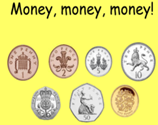 |
| Measurement: | 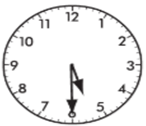 |
|
Summer 2 |
|
| Geometry: |
Properties of Shape
|
| Statistics: |
Statistics
|
| Geometry: |
Position & Direction
|
Year 5
Autumn Term
|
Autumn 1 |
|
| Number: |
Place Value
|
| Number: |
Addition & Subtraction
|
|
Autumn 2 |
|
| Number: |
Multiplication & Division
|
| Number: |
Fractions A
|
Spring Term
|
Spring 1 |
|
| Number: |
Multiplication & Division
|
| Number: |
Fractions B
|
|
Spring 2 |
|
| Number: |
Decimals & Percentages
|
| Measurement: |
Perimeter & Area
|
| Statistics: |
Statistics
|
Summer Term
|
Summer 1 |
|
| Geometry: |
Properties of Shape
|
| Geometry: |
Position & Direction
|
| Number: |
Decimals & Percentages
|
|
Summer 2 |
|
| Number: |
Negative Numbers
|
| Measurement: |
Converting Units
|
| Measurement: |
Volume
|
Year 6
Autumn Term
|
Autumn 1 |
|
| Number: |
Place Value
|
| Number: |
Four Operations
|
|
Autumn 2 |
|
| Number: |
Fractions
|
| Measurement: |
Converting Measures
|
Spring Term
|
Spring 1 |
|
| Number: |
Ratios
|
| Number: |
Algebra
|
| Number: |
Decimals
|
|
Spring 2 |
|
| Number: |
Fractions, Decimals & Percentages
|
| Measurement: |
Perimeter, Area & Volume
|
| Statistics: |
Statistics
|
Summer Term
|
Summer 1 |
|
| Geometry: |
Properties of Shape
|
| Geometry: |
Position & Direction
|
|
Summer 2 |
|
| Transition: |
Investigations & Preparations for KS3
|
Calculation Policies
Click the links below to access calculation policies
Multiplication and Division Calculation Policy
Addition and Subtraction Calculation Policy








